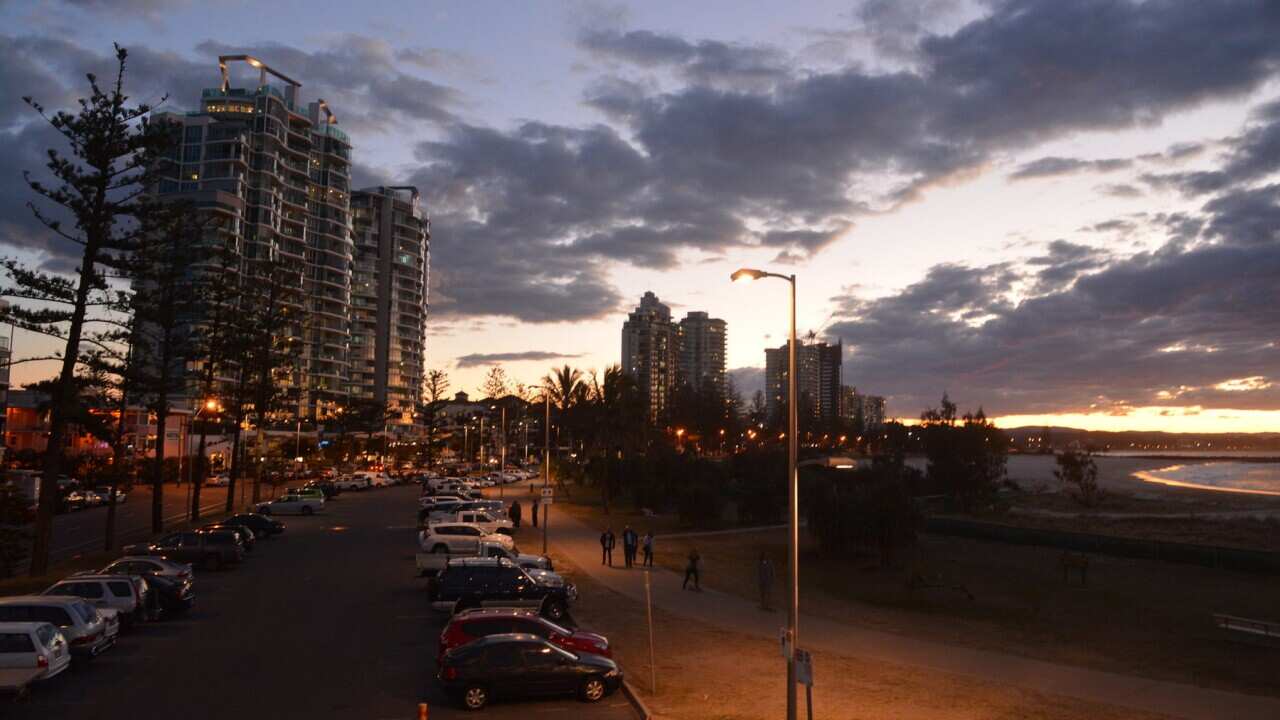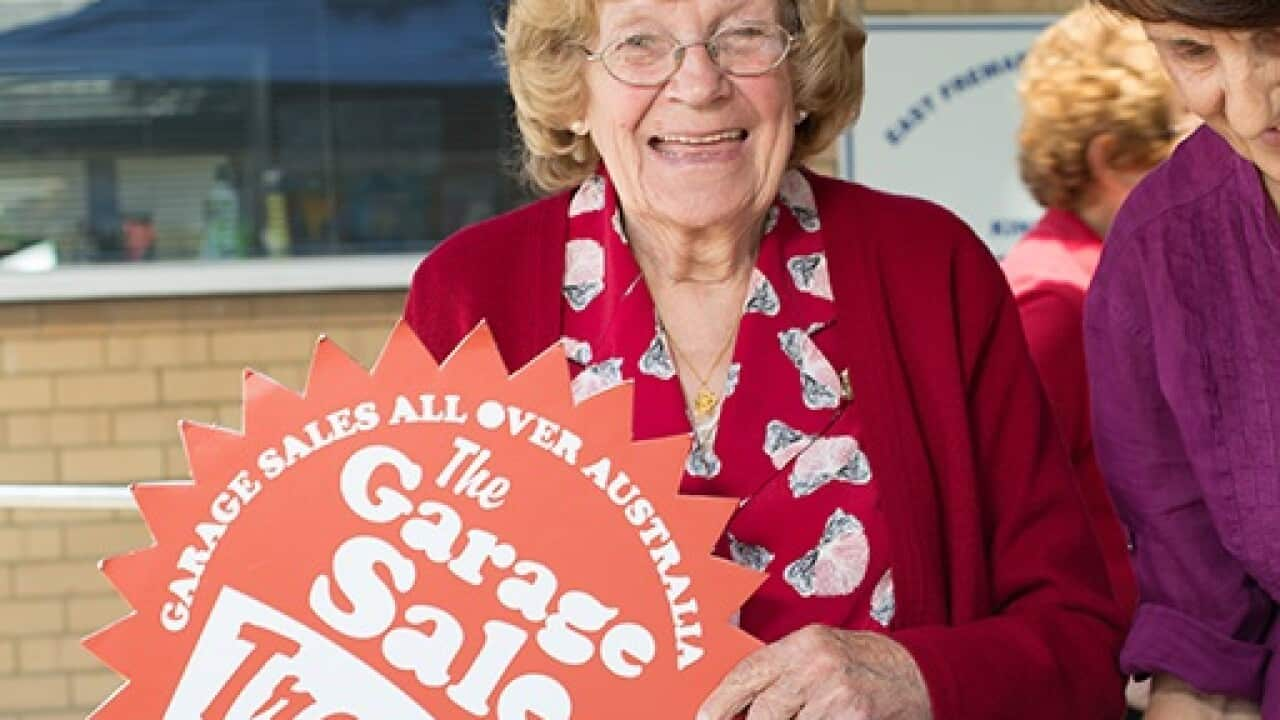Italian
Con i suoi alti grattacieli e le sue bellissime spiaggie, la Gold Coast non richiama le immagini tradizionali dell'Australia regionale.
Ma un consorzio di formatori sostiene che le statistiche offrono un'immagine diversa.
Study Gold Coast sta facendo pressioni sul governo federale per cambiare la classificazione in regionale per cercare di aumentare il numero degli studenti internazionali e migranti qualificati che vogliano stabilirsi nella città del sud est del Queensland.
Senza cambiamenti, la Gold Coast non potrà beneficiare dei nuovi visti e incentivi che verranno introdotti il prossimo mese nell’ambito dell'iniziativa del governo volta a alleviare il traffico cittadino e incoraggiare i migranti e gli studenti internazionali a trasferirsi nelle aree regionali.
Il presidente di Study Gold Coast, Alfred Slogrove, afferma che la sua città attrae soltanto il 4% del mercato degli studenti internazionali, in confronto a Melbourne e Sydney, che ospitano circa l'85% degli studenti internazionali.
“We have less than Adelaide, we have the equivalent of other parts of the country that are deemed regional in terms of international student numbers. We’re not looking to be treated differently, we’re just looking to be treated the same when it comes to international education.”
Da novembre, gli studenti internazionali che otterranno un titolo di studio da un'università regionale potranno lavorare un anno in più in Australia.
Verranno inoltre create 1000 borse di studio dal valore di 15.000 dollari disponibili ogni anno per gli studenti internazionali nelle aree regionali.
Con il sistema di immigrazione attuale, la Gold Coast è considerata un'area metropolitana alla pari di Sydney, Melbourne, Brisbane e Perth.
Secondo Slogrove la classificazione non ha senso, considerando che la capitale del South Australia, Adelaide, ha una popolazione che è il doppio della Gold Coast ed è considerata regionale.
"We need the incentives to help us attract us the best quality talent here to the coast that support all different types of the economy including visiting family and relatives to our tourism market."
La campagna della Gold Coast ha messo in luce le difficoltà che si incontrano nel tracciare i confini tra aree regionali e metropolitane.
Ma il professor John Halsey, esperto di istruzione nelle aree regionali, accusa la Gold Coast di un tentativo di approfittare del sistema e sostiene che la definizione del governo federale è già troppo vasta.
“To classify Adelaide as regional per se in terms of the definition has a distorting impact on the policy.”
Il professor Halsey, che nel 2018 ha condotto una revisione per il governo federale sull'istruzione nelle aree regionali, rurali e remote, dichiara che la politica del governo non consiste solamente nell'alleggerire il traffico nelle grandi città, ma anche nell'utilizzare gli studenti internazionali e i migranti qualificati per stimolare l'economia di aree del paese in difficoltà.
Per raggiungere questi scopi però, dichiara il professore, devono venire ristretti i confini.
“So that the definition doesn’t become gamed if you like or significantly distorted and the net result is that those that already have an advantage or degree of privilege and a degree of capacity to attract are further advantaged compared to what I want to call more authentic or bonafide regional locations.”
La popolazione di 600.000 abitanti della Gold Coast è in crescita costante negli ultimi anni, con un aumento del 2,6% lo scorso anno.
Il ministro federale dell'immigrazione, David Coleman, ha sottolineato che l'aumento supera decisamente la media australiana dell'1,6%.
Lo status di metropoli, aggiunge il ministro, è stato assegnato nel 1993.
Coleman dichiara che non è stato cambiato nell’ambito del piano del governo di sostituire le quattro diverse definizioni in uso per i vari visti di immigrazione specializzata con un'unica definizione più semplice.
Questa definizione non solo viene applicata agli studenti internazionali, ma anche ai due nuovi visti regionali che offrono 23.000 posizioni a potenziali lavoratori immigrati specializzati.
Se vivono e lavorano in aree regionali per almeno tre anni, avranno poi diritto a fare domanda per la residenza permanente – l’obiettivo finale per molti immigrati.
English
Boasting gleaming high rises along beautiful beaches, the Gold Coast does not fit in with traditional images of regional Australia.
Study Gold Coast is lobbying the federal government to change its classification to regional in an attempt to boost the number of international students and skilled migrants settling in the south east Queensland city.
Without a change, the Gold Coast won’t benefit from new visas and incentives to be introduced next month as part of the government’s push to ease city congestion while encouraging migrants and international students to go regional.
Study Gold Coast chief executive Alfred Slogrove say the city only attracted four per cent of the international student market, compared to Melbourne and Sydney which are home to about 85 per cent of international students.
“We have less than Adelaide, we have the equivalent of other parts of the country that are deemed regional in terms of international student numbers. We’re not looking to be treated differently, we’re just looking to be treated the same when it comes to international education.”
From November, international students who graduate from a regional university will be able to work for an extra year in Australia.
There will also be 1,000 scholarships worth $15,000 available every year to international students in regional areas.
Under Australia's migration system, Gold Coast is considered metropolitan alongside Sydney, Melbourne, Brisbane and Perth.
Mr Slogrove says it doesn't make sense, given South Australia's capital Adelaide has a population double that of the Gold Coast and is considered regional.
"We need the incentives to help us attract us the best quality talent here to the coast that support all different types of the economy including visiting family and relatives to our tourism market."
The Gold Coast campaign has highlighted the difficulties in drawing the boundary between regional and metro areas.
But Regional education expert Professor John Halsey accuses the Gold Coast of trying to play the system, arguing the federal government’s definition is already too broad.
“To classify Adelaide as regional per se in terms of the definition has a distorting impact on the policy.”
Professor Halsey, who conducted a review into regional, rural and remote education for the federal government in 2017, says the policy is to not simply ease congestion in the big cities, but use international students and skilled migrants to stimulate struggling country areas.
But he says to achieve that goal, they needed to tighten the boundaries.
“So that the definition doesn’t become gamed if you like or significantly distorted and the net result is that those that already have an advantage or degree of privilege and a degree of capacity to attract are further advantaged compared to what I want to call more authentic or bonafide regional locations.”
The Gold Coast's population of 600,000 has been steadily growing over the last few years, increasing by 2.6 per cent last year.
Federal Immigration Minister David Coleman says that significantly outstrips the Australia average of 1.6 per cent.
He said the Gold Coast's metropolitan status was set in 1993.
Mr Coleman says that had not changed as part of the government's plan to replace four different definitions in place for various skilled migration visas with one simpler definition.
The definition not only applies to international student visas, but two new regional visas offering 23,000 places to prospective skilled migrant workers.
If they live and work in a regional area for at least three years, they will then be able to apply for permanent residency – the ultimate goal of many migrants.
Report by Rosemary Bolger




